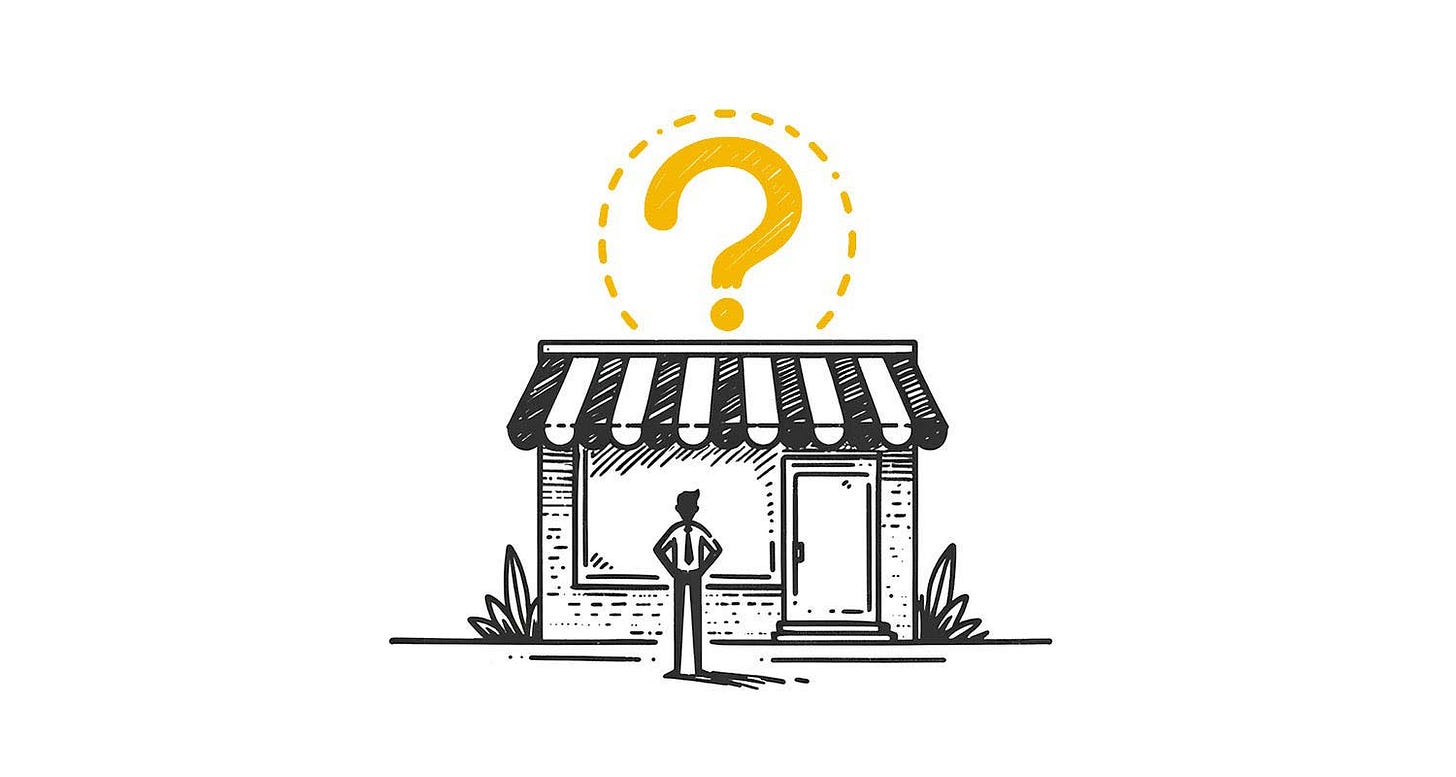Do You Really Need a Logo?
Discover why your startup might not need a logo right away and what visual elements actually matter for making your business memorable and successful.
Hey marketer! 👋🏻
Creating a good, original, functional, and memorable logo is an art. It's a job for a real graphic designer. (That is, if you're really serious about it and don't just want to slap some image next to your company name. Just to have something there.) And if you're in a situation where you're managing a budget, try to think about whether it's really necessary to have a logo at all. If yes and you're building a brand, go for it! Choose a good designer and get started.
However, I think it's still not emphasized enough that for many common types of businesses (especially in services) or e-commerce stores, a logo isn't absolutely necessary. At least not in the beginning, when you're dealing with the most essential investments for launching your business. 🤷🏻♂️ And maybe you won't even need one later.
Think Beyond the Logo 🎨
Think about it - how many restaurants, cafes, hair salons, plumbers, or mechanics can you remember by their logo, and what role did that play in you choosing them? For a first impression, it's more important to be memorable and distinctive, which you can achieve more easily through your unique color combination, characteristic shapes, and font choices. 💡 And by using them everywhere - on your website, flyers, business cards, car wraps, or storefront signs.
Chocolate Break 🍫
In this context, I like to do this little exercise. Try to recall what logos these chocolate brands have: Cadbury, Milka, Ferrero Rocher, Godiva, or Lindt. You'd probably have to think for a while and be a chocolate lover to describe them precisely.
But I bet you know that Cadbury is purple, Milka is purple too (with that Alpine cow!), Ferrero Rocher is gold, Godiva is gold and red, and Lindt is red and gold. Right? 🤔 Each has its own color, its own font, and uses it everywhere. That's what makes them recognizable.
If you wanted to start your own taxi service, you'd do better with distinctively wrapped cars and a good name than just a logo. 🚕 Even that logo will always be placed in the context of some graphics that will create the overall impression as a whole.
It makes sense to me to rather not have a logo than to create one at all costs. Notice how many cafes have a coffee cup in their logo, how many auto shops have a little car, how many dentists have a tooth. 🤦🏻♂️ They're all the same, so they're actually pointless.
DIY Logo Creation Tips 🛠️
If you still insist that you want and need a logo (and want to create it yourself), be very careful with your font choice (not every font can be used in logos due to licensing) and also with choosing any images you want to use in the logo. The safest approach is to draw the logo yourself. 🎨
With stock photo illustrations, you risk licensing problems or someone else using the same image in their logo. If you buy a complete logo design from a stock site and just change the name, you risk not being unique with that logo. For small regional businesses, this might not matter, but if you start succeeding and grow with that logo into a large company, it could become a problem later.
💡 Moreover, when buying images from stock photo sites, you can never be completely sure that the site actually has the rights to sell them. More on that in [this article about copyright issues].
Technical Considerations 📐
When designing a logo, besides the creative aspect, you need to consider its easy use in various situations. A logo should be clearly readable in both small and large sizes. It should work in one color, in reverse, and should be easily producible not only in print but also through engraving, sandblasting, and similar techniques. So no photos, shadows, or similar effects that would complicate production (and yes, people really do this - I've seen it all 🤦🏻♂️). Look at it with some distance - will it work if I have it made into a stamp? 🧐
Keep It Simple and Consistent 📋
Overall, a logo should be simple, readable, understandable, and distinguishable (at minimum) from your competition.
Once you have a finished logo, it's good to create a small logo manual. Maybe just one PDF page showing all versions of the logo (there can be several - horizontal with image next to text, vertical with image above text, extended with a tagline, etc.) and describing which color variants to use when, or how the logo will look on a dark background. Also specify exact colors and fonts you'll be using.
From a professional designer, the resulting manual should additionally include things like logo protection zones or exact colors for print and screen. Extended logo manuals (or rather brand manuals) also contain things like the appearance of basic stationery (business cards, letterheads, etc.), email signatures, and other graphic layouts. This mainly concerns larger companies and brands. But nothing stops you from having one too! Even if you don't need a logo. It will be your helper in maintaining consistent visual presentation.
The Bottom Line 🎯
🤗 Having your own logo is nice, but it's not a necessity. If you really don't need it, don't stress about it and nothing bad will happen. Just keep an eye on your overall visual identity.
Remember, you're building a business, not just a logo. Focus on what truly matters for your success!
☕ Enjoying the content? Support the project!
Help me keep creating practical marketing content by buying me a coffee. Every cup fuels more articles, tips, and resources for fellow entrepreneurs like you!
Jan Barborik
P.S.: If you enjoyed this article, forward it to a friend.
If you're that sexy friend, subscribe here.




